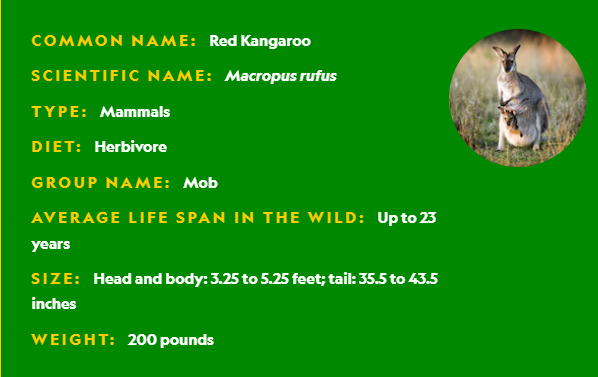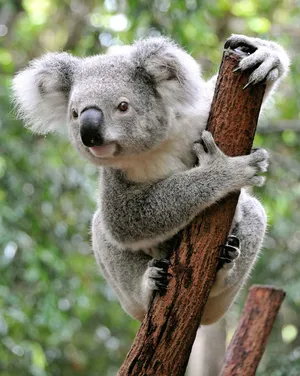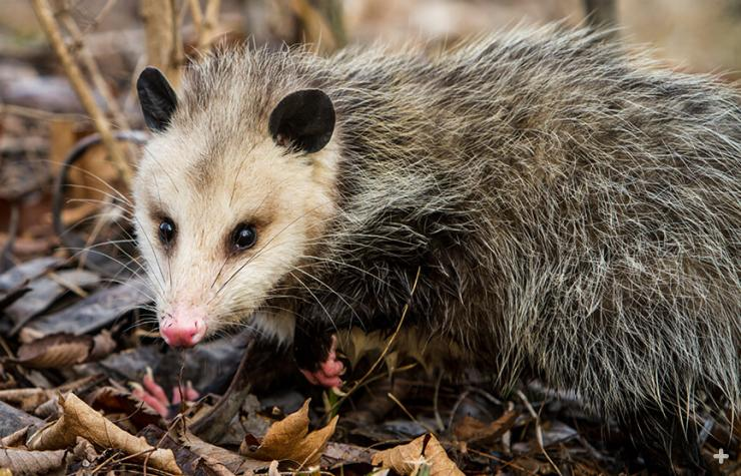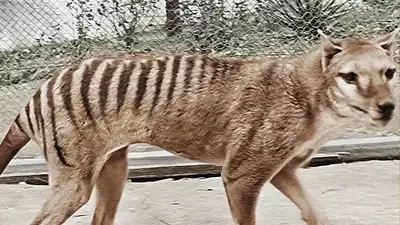
Marsupials, a group of mammals, stand out in the animal kingdom for their unique reproductive methods and diverse adaptations. From Kangaroos to Koalas, marsupials showcase an incredible array of adaptations and behaviors that make them fascinating subjects for study. This article delves into their intriguing world, by exploring their key characteristics, behaviors, distribution, threats, and conservation measures.
About the Marsupials
They are a group of mammals that are known for giving birth to relatively undeveloped young, which then continue to grow and develop outside the womb, typically in a pouch. Some of the well-known examples of marsupials are:
Kangaroos
Kangaroos are herbivorous mammals and inhabit a variety of habitats ranging from forests to grasslands. They are native to Australia.

Koalas
Koalas are herbivorous mammals feeding almost exclusively on eucalyptus leaves. They are native to Australia.

Opossums
Opossums are herbivorous mammals who are known for their distinctive long, hairless tails and their ability to play dead when threatened, which is known as “playing possum”. They are found primarily in America.

Tasmanian Tiger
The Tasmanian tiger, also known as the Tasmanian wolf, was a carnivorous marsupial that is believed to be extinct.
- This animal vanished from the Australian mainland over 2000 years ago, largely due to excessive hunting, diseases, and competition from the dingo, a wild canine native to Australia.
- The Tasmanian tiger looked similar to a dog, with dark stripes extending from its back to its stiff tail and abdominal pouch.

Key Characteristics of the Marsupials
| Viviparous | Female marsupials give birth to living young instead of laying eggs. |
| Short Gestation | Marsupials have a short gestation period as the young ones are born at a very early stage of development. |
| Pouched Young | The offspring born out of a female marsupial is relatively underdeveloped young and is called Joeys. After getting born, these joeys crawl into the mother’s pouch to continue their development, as it provides a protected environment for the young to grow and suckle. |
| Lacks Placenta | Marsupials lack placenta. Instead, the young get their nourishment in the pouch attached to their mother’s belly. |
| Diverse Habitats | Marsupials are found in a variety of habitats, ranging from forests to deserts. They have adapted to different ecological niches and exhibit a wide range of sizes and body forms. |
| Dietary Adaptations | Some are herbivores, like kangaroos, while others are carnivorous, like the Tasmanian devil. |
Peculiar Behavior of Marsupials
- As the young marsupial grows within the pouch, there comes a point in their development when they start venturing out of the pouch to explore the external world and then return to the pouch for safety and nourishment. This stage is referred to as “pouch-emergent” or “pouch-exiting.”
- They have a distinctive dentition. For example, many species possess sharp, chisel-like incisors for gnawing and cutting vegetation.
- Many marsupials are nocturnal, meaning they are most active during the night.
- They use scent marking as a form of communication. Scent glands are located in various parts of their bodies, such as the face or tail, which allows them to mark territory or communicate with potential mates.
- Some marsupials display complex social behaviors. For example, Tasmanian Devils can form groups called mobs, where individuals interact through vocalizations and facial expressions.
Distribution of Marsupials
- Australia – Marsupials are native to Australia. It is the epicenter of marsupial diversity, hosting the highest number of marsupial species.
- New Guinea – Tree kangaroos are among the marsupials found in the dense rainforests of New Guinea, which is located to the north of Australia.
- Americas – The Americas also have a presence of marsupials, with opossums being the only marsupial family found in North and South America.
- India – Marsupials are not naturally found in India.
Threats to Marsupials
- Habitat Loss – The loss of their natural habitats due to human activities such as deforestation, urbanization, and agricultural expansion.
- Introduced Species – The introduction of non-native species such as foxes and feral cats, can prey on marsupials and compete with them for resources.
- Disease – They, like other wildlife, can be susceptible to diseases especially those brought in by humans or invasive species which can have devastating impacts on the marsupial population.
- Climate Change – Changes in temperature, precipitation patterns, and the availability of food resources can impact the distribution and behavior of marsupials.
- Road Mortality – They, especially those living in urban or suburban areas, are vulnerable to vehicle collisions making it risky for them to move between different areas in search of food, mates, or suitable nesting sites.
- Hunting and Poaching – In some regions, marsupials are hunted for diseases, ur, meat, or body parts, and illegal trade can pose a serious threat to certain species.
- Human-Wildlife Conflict – Marsupials living near human settlements face issues such as the destruction of crops, which may lead to retaliation against marsupials.
Suggested Measures for their Conservation
- Habitat Protection and Restoration – To preserve and protect natural habitats and prevent habitat fragmentation, such as by establishing and maintaining wildlife corridors.
- Management of Invasive Species – Invasive predators, like feral cats and foxes, can have a devastating impact on marsupial populations. It is essential to implement programs to control or eradicate these invasive species.
- Biosecurity measures – To implement monitoring programs to assess population trends, identify threats, and evaluate the success of conservation efforts.
- Connecting fragmented habitats – To build wildlife corridors or install rope bridges that will allow marsupials to move freely between isolated patches of suitable habitat, promoting genetic diversity and population resilience.
- Climate Change Mitigation – To address the impacts of climate change, which can affect marsupial habitats and food sources, and to support initiatives aimed at reducing greenhouse gas emissions and promoting climate-resilient landscapes.
In conclusion, marsupials, with their distinctive reproductive methods and behaviors, contribute significantly to our planet’s biodiversity. By combining scientific research, innovative conservation strategies, and increased public support, we can contribute to the protection and preservation of marsupials, ensuring their continued existence for future generations.
Related Prelims PYQs
UPSC Prelims 2023
Consider the Following Statements:
Statement I: Marsupials are not naturally found in India.
Statement II: Marsupials can thrive only in montane grasslands with no predators.
Which one of the Following is Correct in Respect of the above Statements?
(a) Both Statement-I and Statement-II are correct and Statement-II is the correct explanation for Statement-I
(b) Both Statement-I and Statement-II are correct and Statement-II is not the correct explanation for Statement-I
(c) Statement-I is correct but Statement-II is incorrect
(d) Statement-I is incorrect but Statement-II is correct
Correct Answer: Option (c)





